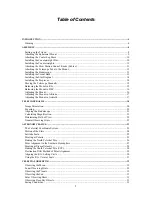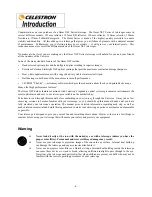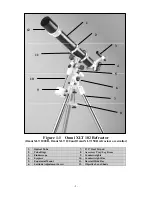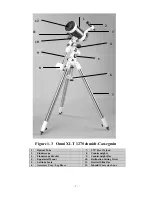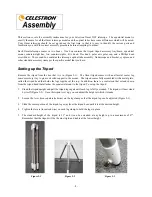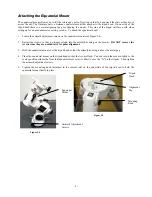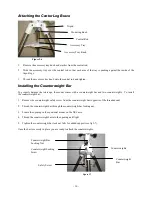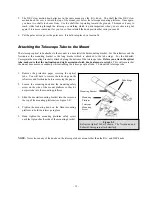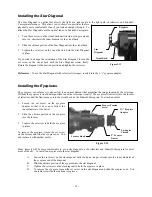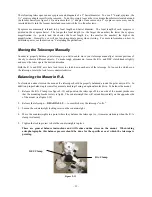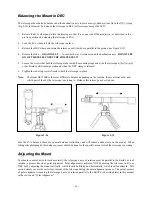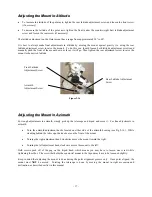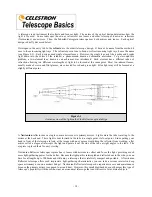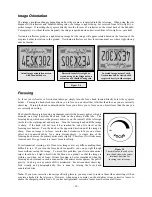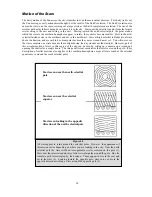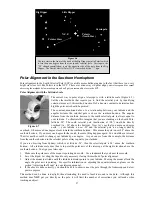
- 12 -
5.
The DEC slow motion knob attaches in the same manner as the R.A. knob. The shaft that the DEC slow
motion knob fits over is toward the top of the mount, just below the telescope mounting platform. Once again,
you have two shafts to choose from. Use the shaft that is pointing toward the ground. This makes it easy to
reach while looking through the telescope, something which is quite important when you are observing but
again if it is more convenient for you to use, then reinstall the knob position that suits your needs.
6.
Put the polar axis cap over the polar axis. It is held into place by a tension fit.
A
A
t
t
t
t
a
a
c
c
h
h
i
i
n
n
g
g
t
t
h
h
e
e
T
T
e
e
l
l
e
e
s
s
c
c
o
o
p
p
e
e
T
T
u
u
b
b
e
e
t
t
o
o
t
t
h
h
e
e
M
M
o
o
u
u
n
n
t
t
The telescope optical tube attaches to the mount via a dovetail slide bar mounting bracket. For the refractors and the
Newtonian, the mounting bracket is the long bracket which is attached to the tube rings. For the Schmidt-
Cassegrain the mounting bracket is attached along the bottom of the telescope tube
. Before you attach the optical
tube, make sure that the declination and right ascension clutch knobs (clamps) are tight.
This will ensure that
the mount does not move suddenly while attaching the telescope optical tube. To mount the telescope tube:
1.
Remove the protective paper covering the optical
tube. You will have to remove the tube rings on the
refractors and Newtonian before removing the paper.
2.
Loosen the mounting knob and the mounting safety
screw on the side of the mount platform so they do
not protrude into the mounting platform
3.
Slide the dovetail mounting bracket into the recess on
the top of the mounting platform (see figure 2-9).
4.
Tighten the mounting knob on the Omni mounting
platform to hold the telescope in place.
5.
Hand tighten the mounting platform safety screw
until the tip touches the side of the mounting bracket.
NOTE:
Never loosen any of the knobs on the telescope tube or mount other than the R.A. and DEC knobs.
Tube Rings
Mounting Bracket
Telescope
Mounting
Screw
Mounting
Platform
Figure 2-9
Refractor Optical Tube is shown. The Newtonian and
Schmidt-Cassegrain attach similarly.


